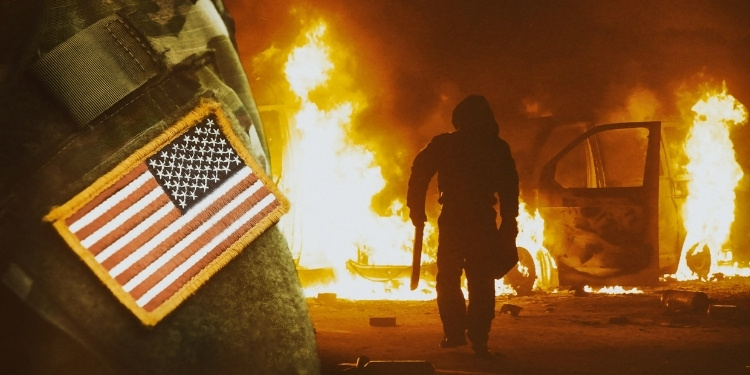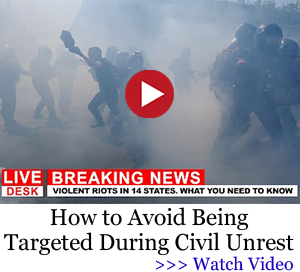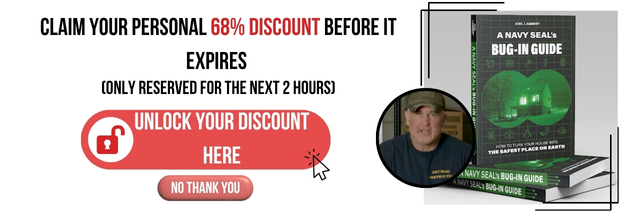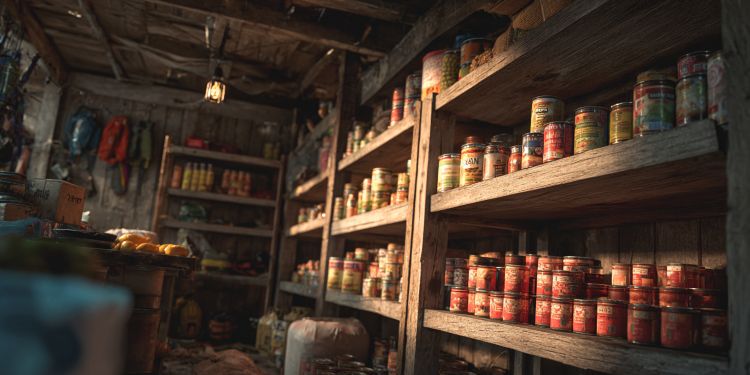72 Hours After The Grid Collapses. What Really Happens?

When people think about the grid going down, they imagine darkness, no internet, and maybe a few cold showers. But the truth is, after 72 hours without power, things could get real, and fast.
We’re not talking about some power outage where the lights flicker and come back in a few hours. We’re talking about a full-blown, widespread grid collapse. Electricity is gone. Communications are silent. Refrigeration, water pumps, gas stations, and the economy all grind to a halt.
ATMs are dead, hospitals are struggling, and supply chains have ground to a halt.
So what really happens in those first 72 hours after the grid goes down?
Let me walk you through it.
Hour 0 to 12: Confusion & Denial
At first, it’s just annoying. The lights go out. Maybe there’s a storm. You check the breaker, check your neighbor’s porch light. Your phone still works, so you try to text someone. Maybe you even joke about it.
 Then, you light a few candles, dig out the flashlights, and pull out a board game. People still think it’s temporary. After all, the grid always comes back, right? Restaurants close early. Stores accept cash only.
Then, you light a few candles, dig out the flashlights, and pull out a board game. People still think it’s temporary. After all, the grid always comes back, right? Restaurants close early. Stores accept cash only.
Some people try to buy ice to save their frozen food. Gas stations without backup power shut their pumps down. Still, there’s a collective shrug. Most assume life will return to normal tomorrow.
But it won’t. That flicker of normalcy is about to fade fast and what you do now will shape how the next 72 hours unfold. This is the moment to check your supplies, take stock of your essentials, and make sure your household can function off-grid if the lights don’t come back on.
Hour 12 to 24: Reality Strikes
By morning, things feel different. Still no power, cell signals start to fade, towers rely on backup batteries, and most of those only last 8-12 hours. Radios go quiet. No texts, no news updates. Some turn to AM/FM radios, but even those stations begin going off-air.
The fridge is warm now. The milk has gone bad. People start realizing the severity. But it’s still just the beginning.
Traffic becomes chaotic. No street lights, no working GPS. Emergency services begin feeling the strain. Fires are slower to respond to. Ambulances can’t reach everyone. People begin asking questions: Is it just our area? Is this nationwide? Was it an EMP? A cyberattack?
Uncertainty breeds unease.
Hour 24 to 48: Panic Sets In
Day two brings full-blown panic. Rumors spread fast. People line up outside grocery stores before they open. There’s no refrigeration, no restocking, and no debit cards. Cash is king, but it’s quickly running out.
Fights start to break out over bottled water, batteries, baby formula, and medicine. People panic buy whatever’s left. Most stores are cleaned out within hours. Some owners start turning customers away to prevent violence.
Without power, ATMs don’t work, banks are closed and credit is useless.
Hospitals begin transferring critical patients or turning them away. Many have only 48-72 hours of generator fuel. Without it, machines fail. Air conditioning and ventilation go down. Medications requiring cold storage are spoiled.
When power goes out, gas stations can’t pump fuel, even if their tanks are full. Soon, people start siphoning gas from parked cars. Some try to trade what little they have left. As frustration builds, desperation begins to replace civility. If you live in a dense area, the atmosphere begins to shift. You feel it. An edge in people’s voices. Extra locks on doors. Empty streets.

Of course, if you’re a prepper who’s mastered the art of bugging-in, you won’t be scrambling with the panicked crowds. While everyone else is fighting for scraps, you’ll be inside, calmly checking your stockpiles, shoring up your defenses, and planning your next moves.
Hour 48 to 72: Breakdown of Order in a Grid-Down Society
By day three, fear outweighs reason. The illusion of normalcy is gone.
Most homes are now without clean water. City water systems need power to operate pumps and purification systems. Without it, water turns brown or stops flowing altogether.
People fill up tubs, pots, kiddie pools, anything that will hold water. But without filtration or boiling, much of it isn’t safe to drink. Illness begins to spread.
The barter economy begins. Neighbors trade food for batteries, meds for firewood, or eggs for baby formula. But trust is wearing thin. Those with supplies begin hiding them.

In urban areas, looting spreads. Pharmacies are broken into. Gun stores are hit first. Then liquor stores. Grocery stores are long cleaned out. Police presence is almost gone. Some officers are home protecting their own families.
People begin to migrate. Some leave cities for rural areas, hoping to find safety or relatives with supplies. Others simply wander, looking for information or help. Roads are jammed with abandoned vehicles. On foot, you’re vulnerable.
Crime rises. Fires start and go unchecked. Gangs may form in some neighborhoods. In others, community members organize watch patrols and post guards at intersections.
People who laughed at preppers now regret every missed opportunity to prepare. Now it’s time to put your anti-looter plan into action by securing your perimeter, staying low, and protecting your stockpile and what’s yours. Every move counts now, and hesitation could cost you everything you’ve worked for.
So, What Should You Do Now?
If you’re reading this while the lights are still on, good. That means you still have time, but not as much as you think. Every day the grid stays up is borrowed time. Just look around: rising tensions, aging infrastructure, and a fragile economy all point to one truth. Now we’re more vulnerable than ever.
This isn’t just a warning. It’s a chance for you to act before that window slams shut. Because once the power goes out and panic sets in, you won’t be able to order supplies online. You won’t be able to fill up your gas tank or grab a few extra canned goods. Everything you do now, every skill you learn, every item you store, every plan you make, will determine how your story unfolds when the lights don’t come back on.
If you are a beginner in the prepper’s community, do not panic! You still have time, but only if you use it wisely. So, make sure you start with the basics:
- Water: Store at least 1 gallon per person per day for drinking and sanitation. Have a gravity-fed water filter and know how to use it.
- Food: Stock up on shelf-stable items, such as rice, beans, canned goods, peanut butter, pasta, oats. Aim for 2-4 weeks minimum.
- Sanitation: Baby wipes, bleach, trash bags, and buckets (for emergency toilets). Poor sanitation causes disease fast.
- Medications: If you rely on prescription meds, start building a backup supply now. Keep over-the-counter essentials on hand for pain, fever, allergies, and digestion problems. It’s also smart to learn how to make natural remedies at home.
- Lighting & Power: Flashlights, lanterns, solar chargers, and extra batteries. Avoid candles indoors – fire is a bigger threat than darkness.
- Cash: Keep small bills hidden in multiple places. If the banks go down, paper money still holds value, but only for a while.
- Self-defense: Whether it’s a firearm, pepper spray, or a neighborhood watch group, have a way to protect your home.
- Plan with Family: Have a meeting place and roles assigned. Everyone should know what to do if phones are dead.
- Build Community: The lone-wolf mindset fails fast. Strong neighborhoods survive longer. Share resources and watch each other’s backs.
Final Thoughts
When the grid goes down, it’s not just about supplies. It’s about staying calm while everyone else loses their grip and being ready before the lights go out. And most importantly? Get your mindset right. You won’t rise to the occasion…you’ll fall to the level of your preparation. So prepare now, while you still have the choice!
Experienced preppers, what’s the #1 piece of advice you’d give to someone just starting out? Share your tips in the comments below!
You may also like:
 Do This Before THEY Shut Down All Prepper Websites
Do This Before THEY Shut Down All Prepper Websites
Do This NOW If You Want to Keep Family Safe when SHTF (VIDEO)
20 Dead Man’s Traps You Can Legally Build to Protect Your Home
The Lost Skills You Need to Survive an Economic Collapse
US Natural Disasters Map. What Calamity Do You Need To Prepare For?
Read the full article here









